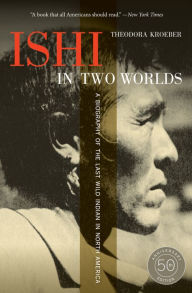PhD. in English, University of Washington (2001)
M.A. in English, University of Washington (spring 2001)
B.S., Teaching Moderate Special Needs Children, Wheelock College (1983)
Deborah A. Miranda is an enrolled member of the Ohlone-Costanoan Esselen Nation of California, and is of Chumash ancestry as well.

An enrolled member of the Ohlone-Costanoan Esselen Nation of California, poet Deborah Miranda was born in Los Angeles to an Esselen/Chumash father and a mother of French ancestry. Miranda’s primary teaching and research topics include American Literature that is off the canonical map - in other words, contemporary American Lit by authors from the margins of U.S.


Dr. Miranda is currently finishing 'Bad Indians: A Tribal Memoir,' a collection of stories, poems, Mission documents, her Esselen grandfather's tape-recorded histories, government records, newspaper articles, and her own experiences as a mixedblood California Indian woman in the 21st century, as well as a book of poems titled 'Written on the Bark of Trees: Praise Poems.'
Deborah Miranda Biography

Deborah Miranda Berkeley
American Indian Poet
Deborah Miranda Coccia
Deborah Miranda also authored two poetry collections: Indian Cartography [Greenfield Review Press, 1999] which won the Diane Decorah Award for First Book from the Native Writer's Circle of the Americas, and The Zen of La Llorona, nominated for the Lambda Literary Award [Salt Publishing, 2004].
As Associate Professor of English at Washington and Lee University, Deborah teaches Creative Writing (poetry and memoir), composition, and a variety of literatures concerned with race, gender and ethnicity.
WLU biographical profile PDF — (original source).
Here is one of Deborah's most famous American Indian poems:

by Deborah A. Miranda, | |
| Indian Cartography My father opens a map of California— A small blue spot marks In my father's dreams I Am Not a Witness I found Coyote, Eagle, and Momoy Some of our bones rest in 4000 graves Mixed-blood, I lay claim by the arch | |
